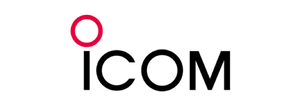Over the last six years, Australian retailers have been fast adopting two way radio technology to power their in-store operations workflows. You may have noticed that notable retailers such as Apple, Bunnings, JB-HiFi, ALDI, Cotton On, Coles, Kmart, Target, Mecca Brands, Culture Kings, Nike and so on, have improved their in store customer experience (CX), via the adoption of two way radio communication technology.
Why are retailers using two way radio in 2024?
If you’re new to two way radio, you may be naturally asking the question, so why two way radio for retailers in 2024? Two way radio is proven, purpose built, communication technology that offers retail teams the ability to:
"Instantly communicate as an entire team, enabling your team to act, in real-time, as a single operational unit."
Unlike making individual phone calls or “instant messages” on smart devices, with two way radio, there are no time delays, operational latency or service lag time, between communication requests. A team member simply needs to press the “Push to Talk” (PTT) button on their radio, or attached microphone/earpiece, and their voice communication will be instantly broadcast to the other team members.
Moreover, unlike mobile phones, two way radios are purpose built for business communication. There are no distractions such as, social media notifications getting in the way of your staff, ultimately serving their customers better.
What are the most popular two way radio models for retail teams?
The four most popular radio system we currently recommend to our retail clients are the following models:
All of these two way radios for retail have distinct advantages for retailers who need a radio system that is easy to use and requires little or no staff training; is comfortable to wear in a busy environment; can be worn with an earpiece; offers private / interference free communication.
There are however some unique differences and advantages offered by each radio model. In this article we discuss the pros and cons between these radio models in the article below.
Motorola CLP107e
The Motorola CLP107e two way radio is the predecessor to the Motorola CLP107. They were Motorola’s first, entry level, commercial radio priced at around the $300 mark. The CLP radios are lightweight, easy to use, comfortable to wear and the audio sounds great as you would expect from Motorola. The Motorola CLP radios have gained popularity and have become an industry standard.
However, the feedback from our customers is the CLP radios tend to need replacing at around 13-15 months after purchase. The CLP107e only comes with a 12 month warranty. Out of warranty repairs are not cheap, making it more financially sensible to just purchase a brand new replacement radio. However, now the Motorola CLP107 radio has been discontinued and is no longer in production, stock has become increasingly difficult to get hold of. Therefore, many existing CLP107 radio users have been transitioning into a fully compatible, alternative: the Kenwood PKT-23X.
We are awaiting stock of the Motorola Curve radio system, and will review it separately in due course.
Motorola CLP107e Summary
Pros:
- Comfortable / Lightweight
- Easy to use
- Clear Audio|
Cons:
- Repairs are expensive.
- Now discontinued.
Kenwood PKT-23X
The Kenwood PKT-23X has become a favourite for our retail customers seeking a high quality, competitively priced retail two way radio solution. Like the Motorola CLP107, the radio is small in size and lightweight. The PKT-23X has the similar dimensions of a credit card.
The Kenwood PKT-23X is a fully compatible alternative to the Motorola CLP107e radios, as the Kenwood radio can broadcast in the same frequency range as the Motorola. To be precise, the PKT operates between 450-480 MHz, and the CLP operates between 450-470 MHz. Therefore, for those CLP users, who are unable to get stock of the Motorola CLP radios, we recommend in the first instance considering the Kenwood alternative.
The Kenwood PKT-23X has proven itself to be very reliable with a failure rate within warranty of 0.01%. The US model comes with a 2 year warranty, whilst the APAC version comes with a 12 month warranty to keep the pricing low. From our customer feedback, the Kenwood’s have lasted long after 2 years, with only the batteries eventually needing replacement, as do all radios.
Like the Motorola CLP107, the Kenwood alternative can be used with an earpiece. However, it also has a small built-in speaker, making it ideal for sitting on a manager’s desk in the back office.
Last but not least, the Kenwood PKT-23X can communicate on our free to use, Onsite 8™ team channels. Therefore, for those who are looking for interference free, radio communication, but don’t want to pay for an ACMA private frequency licence, the Kenwood is a great alternative.
Kenwood PKT-23X Summary
Pros:
- High build quality & proven reliability long after warranty period.
- Small, lightweight, great audio quality.
- Radio can be used with or without an earpiece.
- Fully compatible alternative to Motorola CLP107e (450-470 MHz).
- Competitive price
Cons:
- We haven't found yet.
Icom IP100H
The Icom IP100H is the most cutting edge two way radio solution out of all of the retail radios mentioned in this article. The IP100H is a Wi-Fi powered radio, meaning that it can be easily deployed, at scale, to a nation-wide retail projects without needing to worry about UHF license fees from the ACMA. In fact, many retailers find it near impossible to find private LMR frequencies in the CBD areas of Melbourne, Sydney and Brisbane. Therefore, having a radio system that communicates over your retail stores existing WiFi network is an intelligent way to go.
The IP100H does not need internet access and all calls / data remain within your private WiFi network. There are a host of other advanced features such as the ability to make individual calls to individual radio users, whilst the rest of the team can communicate on their desired team channels. The radio can also send pre configured alerts messages, and has a vibrate function for teams that need to communicate discreetly.
The IP100H is part of Icom’s IP Network radios that can be interlinked with multiple sites, if necessary, including traditional UHF & LTE radios via the (optional) Icom VE-PG4 ROIP gateway. The VE-PG4 enables the radio to receive incoming telephone calls, and the ability to control remote gates, alarms and other cutting edge innovation. The features are too big to list here, which we will outline in a future blog post.
The Icom IP100H has now been superseded by the Icom IP110H. Radio Warehouse have acquired all remaining IP100H stock from Icom.
Icom IP100H Summary
Pros:
- WiFi powered (No ACMA frequency dependency)
- Crystal clear audio
- Easy to use. Configured to your team’s requirements.
- Very high build quality. 24 month warranty. Made in Japan.
- Can be used with or without an earpiece.
Cons:
- Bigger sized than the Kenwood PKT & Motorola CLP radios.
- May require staff training if the radios are “over configured” with all the advanced features this system offers. We recommend that our engineers customise the firmware for your precise operational needs.
Wireless Pacific Go Pro Digital (GPD)
The Wireless Pacific Go Pro Digital (GPD) radios are currently our favourite two way radio system that we recommend for our retail clients.
Just like the Motorola CLP107 and Kenwood PKT23X radios, the GPD’s are lightweight, easy to use, and small in size. The GPD’s are only marginally bigger than a credit card so they can be easily worn in a busy environment, with or without an earpiece.
The added advantages that the GPD offer over the other alternative radios in this article is they can be programmed in both analog and digital DMR mode, meaning that they first, fully compatible with the Motorola CLP107e, Kenwood PKT-23X radios in analog mode. Secondly, they are also fully compatible with Motorola’s higher spec DMR radios such as the Motorola DP2800. The GPD is the lowest cost, and most lightweight, DMR digital radio in Australia.
For those retailers who are currently using a licenced UHF frequency between 450-480 MHz on their radios, you can now upgrade to digital at a very competitive price point, enjoying all of the privacy, encryption and other features provided in a DMR digital radio.
Wireless Pacific Go Pro Digital (GPD) Summary
Pros:
- Lowest cost and most lightweight DMR digital radio in Australia.
- Fully compatible alternative to Motorola CLP107 and Kenwood PKT-23X radios.
- Light weight, easy to wear & use. No staff training required.
- We use this radio in our warehouse / office environment for staff communication.
- High build quality and very reliable.
Cons:
- We haven’t found one yet.
For further information, please contact us and one of our retail radio experts will be happy to assist you further with independent, expert advice. Please also see our retail radio industry solutions.
About the author
Ari Adar is the Managing Director of Radio Warehouse and has over 15 years experience in the business critical telecommunications industry. He is passionate about helping business teams communicate with powerfully simple technology.














